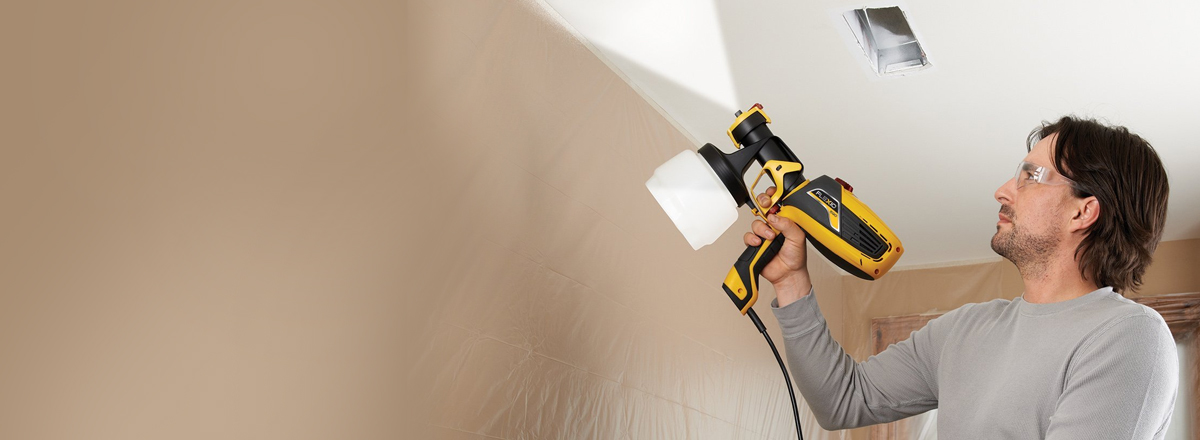
Interior Painting Tips for Ceilings
Painting a ceiling isn't always the easiest project. Follow these simple tips.
Getting Ready
Whether you roll or spray the ceiling, it's important to prepare for occasional splatters. Move the furniture out of the room and cover the floors with canvas drop cloths or plastic sheeting. You'll want to wear protective clothing, goggles and a hat while you're painting.
Work with a stable stepladder that's tall enough to allow you to work from second-highest step and a work light that you can plug into an outlet in another room. Then, either remove light fixtures or tape over them. A convenient way to deal with a hanging fixture that isn't very heavy is to detach it from the electrical box, let it hang and cover it with a plastic bag.
To Spray or Roll?
Some painters break out a roller when it’s time to paint a ceiling, but it isn't always the best tool for the job. If you're planning on painting the entire room, a sprayer is much more efficient, especially if the ceiling is heavily textured. When you're painting the whole room, spraying can also eliminate the need for cutting in, which is one of the more time-consuming tasks in interior painting. Simply spray the ceiling, and let overspray land on the wall and ceiling trim.
After the ceiling paint dries, it’s time to paint the walls. Cover the edges with quick-release masking tape and paper -- to avoid getting overspray on the ceiling -- and start spraying the walls. Paint the trim last, taping off the wall or, if you have a steady hand, you can paint them using a brush freestyle.
Rolling Tips
Some people prefer to use a roller -- and spraying isn't the easiest option if you're just painting the ceiling and can't get paint on the walls. When using a roller, the job will go faster with an all-in-one roller and paint container like the Wagner SMART roller. Before rolling, you should cut in around the edges of the ceiling with a paintbrush; it's best to paint the trim after you do the ceiling, so don't worry about getting ceiling paint on it. Roll while the cut in paint is fresh to avoid a visible transition. It's best to use a medium-nap roller -- it holds more paint than a short-nap one, and you won't have to reload as often. Roll the ceiling longitudinally, overlapping by half the length of the roller, then go over it again in the perpendicular direction to minimize streaking.
Choosing Paint
The ceiling doesn't sustain spills, but that doesn't mean it doesn't get stained; warm air collects there and can deposit smoke, moisture and grease. Before painting, wash thoroughly with a water and trisodium phosphate detergent, especially if the ceiling is in the kitchen. A single coat of shellac-based, stain-blocking primer should prevent stains from bleeding through the top coat. Paint with a product formulated especially for ceilings; it stays wet longer than wall paint, which helps prevent streaks, and it doesn't splatter as much. On the other hand, for trim interior latex gloss or semi-gloss enamel is best. Remove the plastic sheeting/drop clothes and uncover the light fixtures when you're done. Then enjoy your handiwork!